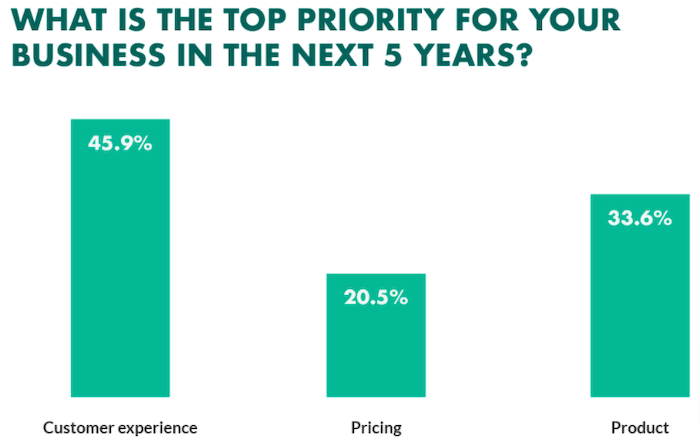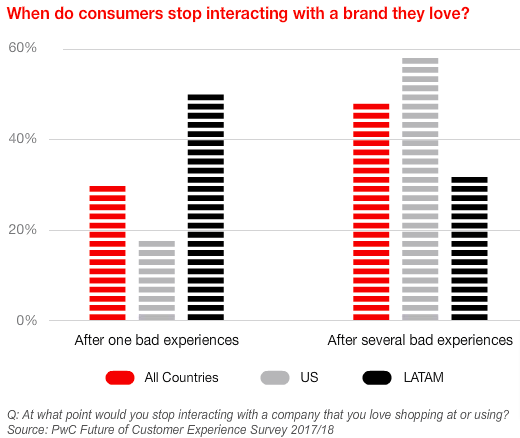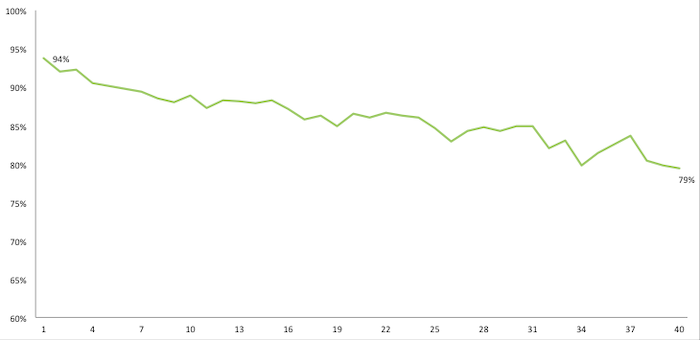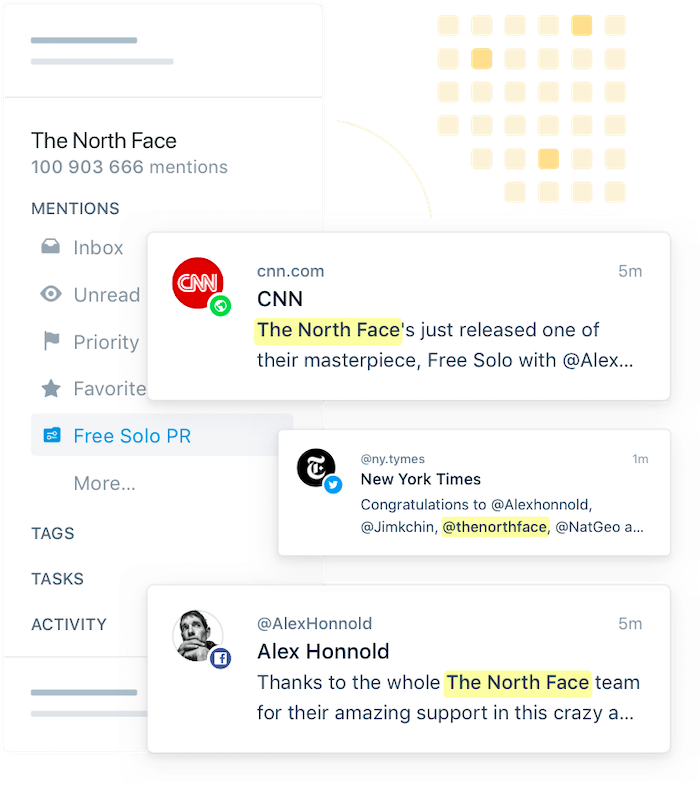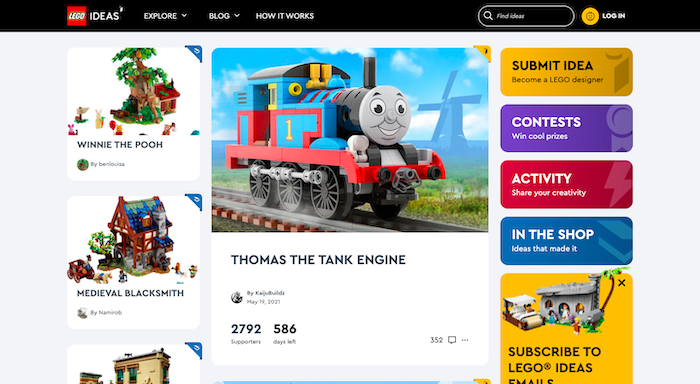
How to Create the Perfect Business Slogan
Have a favorite slogan?
That catchphrase that just sticks in your head like a catchy tune. Sometimes it even has a little jingle or rhyming structure that adds some flair. You know it works because it stays with you. You remember it, and you remember the company it stands for.
Does your brand need a slogan? Probably. Here’s why.
What Is the Purpose of a Business Slogan?
A good slogan is catchy and bounces around your head like an earworm. However, a good business slogan is more than just a catchphrase.
It’s a rallying point for your brand. It envelops everything you stand for and everything you offer to the public.
It’s a battle cry, of sorts.
In fact, the etymology of the word slogan reflects just that. The term comes from a Gaelic Scottish term used as a battle cry. In the early 1700s, the term slogan described catchphrases used by political or other groups.
These days slogans are more important than ever as we are awash in visual and audio media, from TV and radio to the internet and digital media.
A great slogan cleverly sums up what you do, inspires engagement with your audience, and sticks with them until they need your product or service.
Your slogan can be written and spoken after your brand name, to help people remember what you’re about. You might place it just after or under your name or logo on your website, social media, marketing materials, or use it in ads. This helps your slogan become synonymous with your brand name.
Why Should Your Business Have a Slogan?
Is it worth taking the time to create a slogan for your business? In most cases, yes. Getting to the heart of your business and finding a phrase that wraps everything you stand for in an unforgettable way can become a powerful brand asset.
A great slogan ranks up there with your business name, logo, and web design.
In many ways, it can bolster your brand marketing strategy. Here’s why.
- A slogan can give you a memorable identity.
- A slogan provides a foundation for a creative marketing campaign.
- A slogan speaks to values to rally around.
- A slogan helps you take a stand.
- A slogan helps customers remember you.
These are just a few of the many benefits of creating a slogan for your business. If you’re convinced, it’s time to get started on putting your slogan together.
How to Create a Business Slogan
It’s a tall order to create a short and simple slogan that absolutely hits it out of the park. The best slogans are short, unusual, and simple to pronounce.
It’s not easy, but it’s worth the exercise to come up with the right slogan.
Consider What Makes Your Brand Special
Before you can start to create a slogan, you have to think about what your business is offering the world. A few things to ask include:
- What are you selling, and why does it matter?
- What values is your company built on?
- What do you stand for?
- What change do you bring to your customers?
- What change are you trying to bring the world?
A few places you can look for inspiration include your:
- mission statement
- vision and values statements
- company history
- target market and their values
- brand assets like infographics, webinars, or e-books.
Determine Your Goals
When it comes to marketing efforts, you should always start with your sales goals. What are you trying to accomplish? What are your plans for the future, and how do you get there?
It’s easy to get off track here if you don’t stay focused. Don’t just focus on the number of sales you want to make; think about how you want customers to feel about your brand and what solution you really deliver.
Consider this—Goodyear sells tires, right? However, when consumers buy tires, they aren’t concerned with what type of rubber or the years of research the company put into developing the proper tread. Consumers want tires that will keep their families safe; that’s the real purpose of the brand.
Keep your guiding documents at the forefront and let them drive your journey toward your slogan. It’s critical to stay on-brand as you are creating your slogan.
Think about what you need this slogan to do for your brand:
- What do you want people to know about your brand?
- What products or services should be the focus?
- What values and visions do you want to communicate?
- What solution does your company really deliver?
Let those answers guide you to the right business slogan.
Start Writing
Whether you decide to hire an outsourced marketing consultant or keep it in-house and write it for yourself, the first step is to start developing ideas.
Just start writing. How many ideas can you come up with?
Write them all down. Don’t limit yourself or do any editing yet. Now is the time to just let the ideas flow. Let one idea inspire another. Dare to be a little off the wall. Don’t stop until you run out of ideas.
When you start petering out, start thinking about your brand name and try out some of the ideas after it. How do they sound together?
Imagine a radio or television commercial. Describe your services or products and think about how those slogan ideas sound at the end of that description.
As you test the slogans out loud, you may start developing more ideas. Write them down! Don’t stop to edit. Just keep adding to the list.
Dare to Be Original
It may be tempting to go out and listen to other slogans, but you probably already have enough of those rolling around in your head.
We hear so many slogans that our brains are already primed to know what sounds good and what doesn’t.
Listening or reading a bunch of slogans while creating your own could do two things detrimental to the process:
- They could cause you to accidentally steal the structure or concepts of other slogans you love. You definitely don’t want to sound like everyone else.
- Getting into the competition mode can stifle your creativity. As you read others’ slogans, especially ones you consider successful, you might start to judge your ideas. Great ideas develop organically on their own; don’t let competition stifle them.
Make It Timeless
Slogans need to stand the test of time. You want people to associate your brand name with your slogan, which means it has to stick around for a long time so they can hear it many times.
This means avoiding anything too contemporary or trendy. Some things to avoid could include:
- playing off a popular series or song title
- building off a political campaign slogan
- reflecting a current pop culture reference
- using “new” slang
To create a timeless slogan, use words and phrases that are universally understood, at least by most speakers of your language.
Try to keep it shorter and avoid any complex phrases or words.
Keep it simple, and a bit straightforward, to help make sure it stands the test of time.
Appeal to Your Audience
As with everything in marketing, you need to consider your target market when you’re putting together a slogan.
How do they talk? Are you using language and syntax that is natural to your audience?
If your target market uses a certain register of English, you can lean into using that style of language. Remember what we talked about above, though.
You don’t need to stylize your slogan to match a certain trendy or slangy way of talking, but you can ensure you use language your target market can relate to.
Another aspect to keep in mind as you shape your slogan is what is important to your target audience. What do they want from your brand, or your competition? What’s important to them?
Think about what they are actually getting from your brand, but dig a little deeper. What are their aspirations? What do they envision their life to be with your brand?
Speak to those needs, rather than just your benefits.
Pare Down Your Ideas
Time to start paring down your ideas. Don’t be afraid to be a bit brutal. It can be hard to nix your favorites, but use the ideas above to weed out slogans that don’t work.
Which ones are too trendy or contemporary? Let them go.
Which ones are too much about your brand, and not enough about your target audience? Take them out.
How’s your list looking now? Do you still have too many ideas? If your list is still too long, here are a few more filters to take out the ones that won’t work as well.
- Which ones are too long?
- Which ones aren’t very memorable?
- Which ones sound too much like someone else’s?
- Which ones do you just not love?
Pare them down to a few that will really work. It’s okay to still have a few great ones. How do you decide what to do next? Let’s look at the last step.
A/B Test Your Top Ideas
Do you still have two ideas left to consider? If you aren’t sure which is “the one,” it’s time for an A/B test.
How do you do that? Start by asking friends, colleagues, or business associates. You might also consider using a focus group.
Whichever path you choose, make sure you present each slogan in the same format. For example:
- Create a branded logo with each of your slogan ideas.
- Design a newsletter header with each slogan idea.
- Record a demo commercial with the slogan ideas at the end.
Now share with your audience. Which one do they respond best to? Is there a clear winner?
If not, consider the feedback they share. Think about the criteria listed above. Did one not appeal to them? Was one not as timeless? Or was it too confusing? Keep in mind that simple is usually best. You can also use A/B testing in paid ads to see which slogan draws in the most traffic or sales.
Best Business Slogan Examples
Let’s get down to the specifics and look at some slogans that work and analyze why they are so effective.
McDonald’s Slogan

Bah, bah, bah, bah, bum. You’re already singing it.
The “I’m lovin’ it” slogan from McDonald’s comes with its own little jingle, but that’s not the only thing that makes it work. It’s simple, it’s memorable, and it’s aspirational. It speaks to a happy life full of things you love.
Burger King
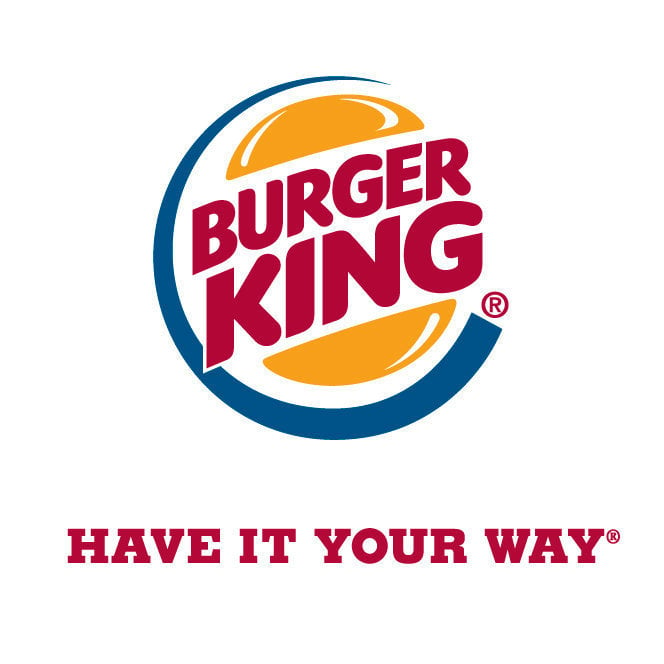
For decades, Burger King touted a brand that let you live life on your terms. The “Have It Your Way” slogan accomplished speaks about their products and about a greater vision in life. You can have your burger your way, and just maybe, you can have life your way, too.
In-N-Out Slogan
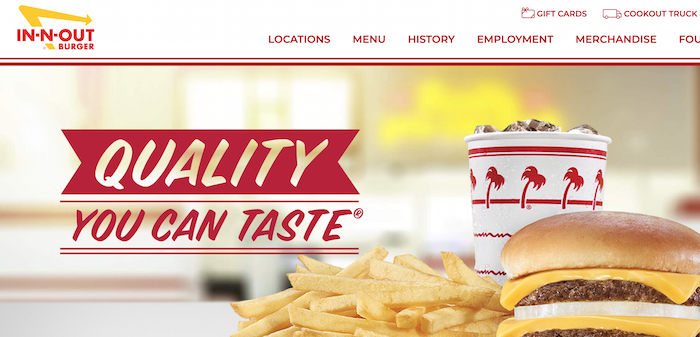
Sometimes simple is best. The In-N-Out slogan is an example of a timeless, simple slogan that speaks directly to what its customers want.
FAQs About Slogans
It’s short, memorable, and speaks to the target audience. Ideally, it should be timeless so it can be used for years to come.
McDonald’s “I’m Lovin’ It” jingle is an example of a catchy slogan.
Burger King’s “Have It Your Way” stood the test of time, by speaking to the burgers and an aspiration. In-N-Out’s “Quality You Can Taste” slogan is simple and holds up over time.
Start with your own business goals in mind, then think about your target audience and what’s important to them.
Creating a Catchy Slogan Conclusion
When it comes to setting yourself apart in the market, branding is crucial. From your visuals to your voice, every component needs to speak to a common goal of who you are and what you’re about.
More importantly, they need to speak to what your target market is looking for. Your slogan is another piece in this puzzle, giving your marketing collateral and campaign another element to work with. Get creative, but stay on course, and create the perfect business slogan for your brand.
What’s your favorite slogan?


